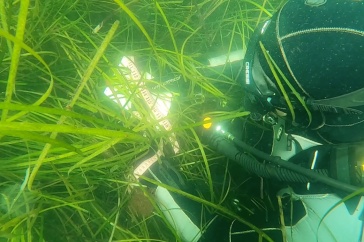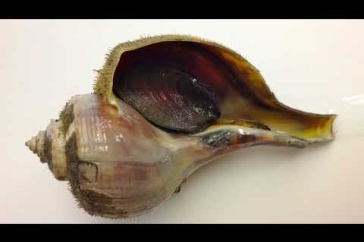
The autumn may be a time when Great Bay Estuary — and the oysters, seagrass and fish that inhabit it — is particularly vulnerable to the effects of ocean and coastal acidification caused by climate change, according to new research from UNH.
For three and a half years, scientists have been monitoring the buffering capacity of the saltwater and freshwater mingling at the mouth of the Piscataqua River. Buffering is the chemical ability of a water body to counteract the effects of acidification. This long time series of data has provided a clearer picture of how the buffering varies throughout the year, and will inform efforts to combat acidification impacts on shellfish, seaweed, and other species growing in the estuary and along the Seacoast.

Chris Hunt, a research assistant professor in the UNH Ocean Process Analysis Laboratory, is the first author on a new study published in the journal Limnology and Oceanography that focuses on the chemical and biological dynamics that determine the pH of New Hampshire’s coastal waters. Ocean acidification (OA) has come into focus in the last decade, as ocean water is absorbing some of the increased carbon dioxide in the atmosphere, which then decreases the pH of the water and makes it more acidic. This has led to impacts on shellfish and coral reefs that are then challenged to form their hard calcified shells in the acidic environment. However, little is known about coastal acidification (CA), which is influenced by numerous factors that all interact with one another.
“Coastal acidification is a developing concept, and we don’t really know how much OA will in turn affect CA,” Hunt says. “We do know that it has implications for our fisheries, coastal and estuarine health, and carbon sequestration. We’re trying to learn more in order to tease apart the individual effects of OA and CA.” He worked closely with UNH research professors Joe Salisbury and Doug Vandemark to study this phenomenon.
Great Bay and the Gulf of Maine are potentially at a higher risk of acidification than elsewhere in the U.S. simply because of where they are located, he adds. This is partially due to the bedrock and soils in New England that are more acidic, as well as the amount of freshwater flowing to the coast that can’t buffer the acid as much as ocean water. In the ocean, naturally occurring buffering minerals can raise the pH, and marine plants take up carbon dioxide to counteract the effects of OA. Hunt was interested in how the mixing of the ocean water and freshwater at different times of the year might impact the overall acidification of Great Bay.
"We do know that it [coastal acidification] has implications for our fisheries, coastal and estuarine health, and carbon sequestration."
But it takes more than a simple litmus test to calculate the buffering of water; two unique chemical measurements are needed to arrive at this number. The UNH research team placed a water quality sensor at the UNH Coastal Marine Lab in New Castle, New Hampshire, because “that location has its foot in both worlds,” Hunt says. “During the outgoing tide, we measured the water that was in Great Bay and had undergone biogeochemical changes in the estuary, and during the incoming tide we measured water brought in from the continental shelf, so it was a little bit of everything. It’s a dynamic site, at the mouth of a tidally-driven estuary with fascinating processes taking place that impact the water’s buffering.”
The study showed that during most of the year, the mixing of estuarine and coastal water was the main driver of changes in buffering; more saltwater meant a less acidic environment because of sea water’s buffering capabilities. However, there was a change during the autumn — there was more activity, like increased aerobic respiration of organic matter and changes in the chemistry of iron or calcium carbonate dissolved in the water column — that made the estuary less buffered. During a dry autumn, more seawater would make its way into the estuary and help to counteract this buffering decrease, but an unusually wet autumn would likely compound the problem.
Moving forward, Hunt is thinking about bigger-picture solutions to the acidification problem. Ocean alkalinity enhancement is becoming a hot topic of discussion among some research circles, where additives to the ocean could offset the acidification and sequester atmospheric carbon dioxide. “Our data provides windows into the times of year when it would be most advantageous to perform this enhancement,” he adds.
Funding for this research was provided by the National Oceanic and Atmospheric Administration and the National Science Foundation.
The UNH Institute for the Study of Earth, Oceans, and Space (EOS) is UNH's largest research enterprise, comprising six centers with a focus on interdisciplinary, high-impact research on Earth and climate systems, space science, the marine environment, seafloor mapping and environmental acoustics. With approximately 100 principal investigators managing more than 400 individual grant awards, and with annual expenditures exceeding $45 million, EOS fosters an intellectual and scientific environment that advances visionary scholarship and leadership in world-class and graduate education.
-
Written By:
Rebecca Irelan | Institute for the Study of Earth, Oceans, and Space | rebecca.irelan@unh.edu | 603-862-0990



















































